
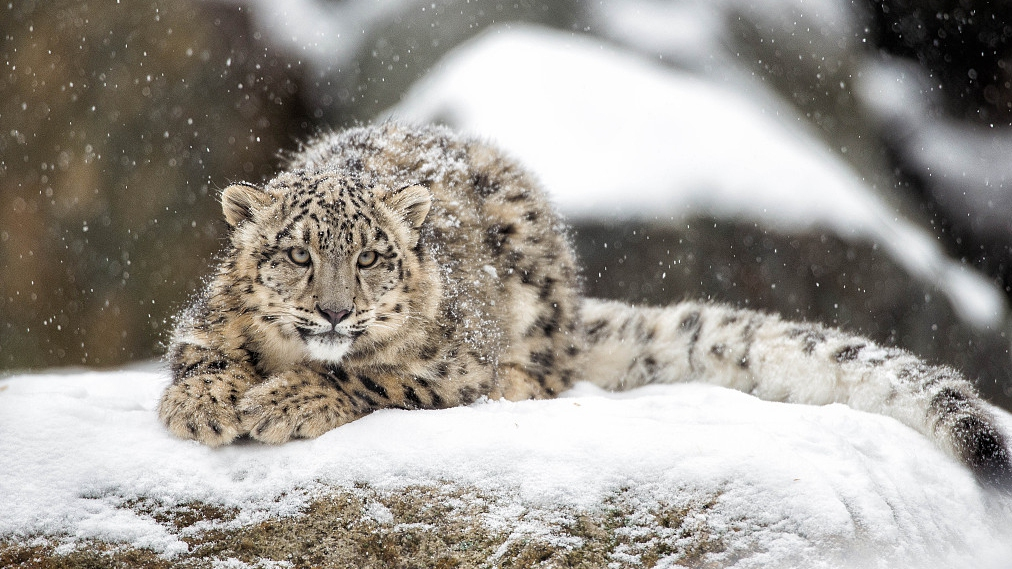
In the valley of Angsai, Terry was beside a car at a distance of 160 meters from a male snow leopard. Not everyone has such an opportunity to be so close to the "ghost cat" on a high plateau mostly accessible to local people.
The king of the snow mountain could catch Terry in a flash, but he didn't. He lounged on the meadow, allowing this visitor to film.
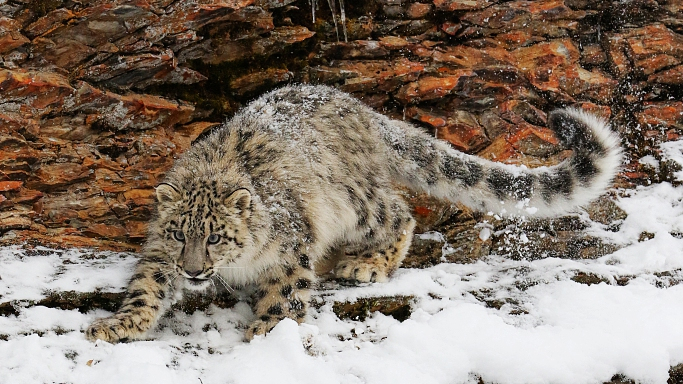
A snow leopard /VCG Photo
Tourism in snow leopard habitats has increased in recent years as everyone wants to catch a glimpse of their secret life. From China to Kazakhstan, snow leopards span 12 countries across Asia. The picturesque highlands, enigmatic creatures, and unique cultures have attracted more and more people to the snow leopard habitats.
The Valley of the Cats is "one of the best places in the world to see snow leopard", described Terry Townshend, the British wildlife photographer, and conservationist. Situated on Angsai township in Yushu Prefecture, China's Qinghai Province, the valley has a distinctive highland ecosystem.
With trees and shrubs lining steep valley sides alongside the Lancang River (or Mekong River), many special animals and birds can be found here, such as snow leopard, Asian brown bear, lynx, and Tibetan fox. Visitors can have an authentic experience by homestays, as well as seeing this wildlife.
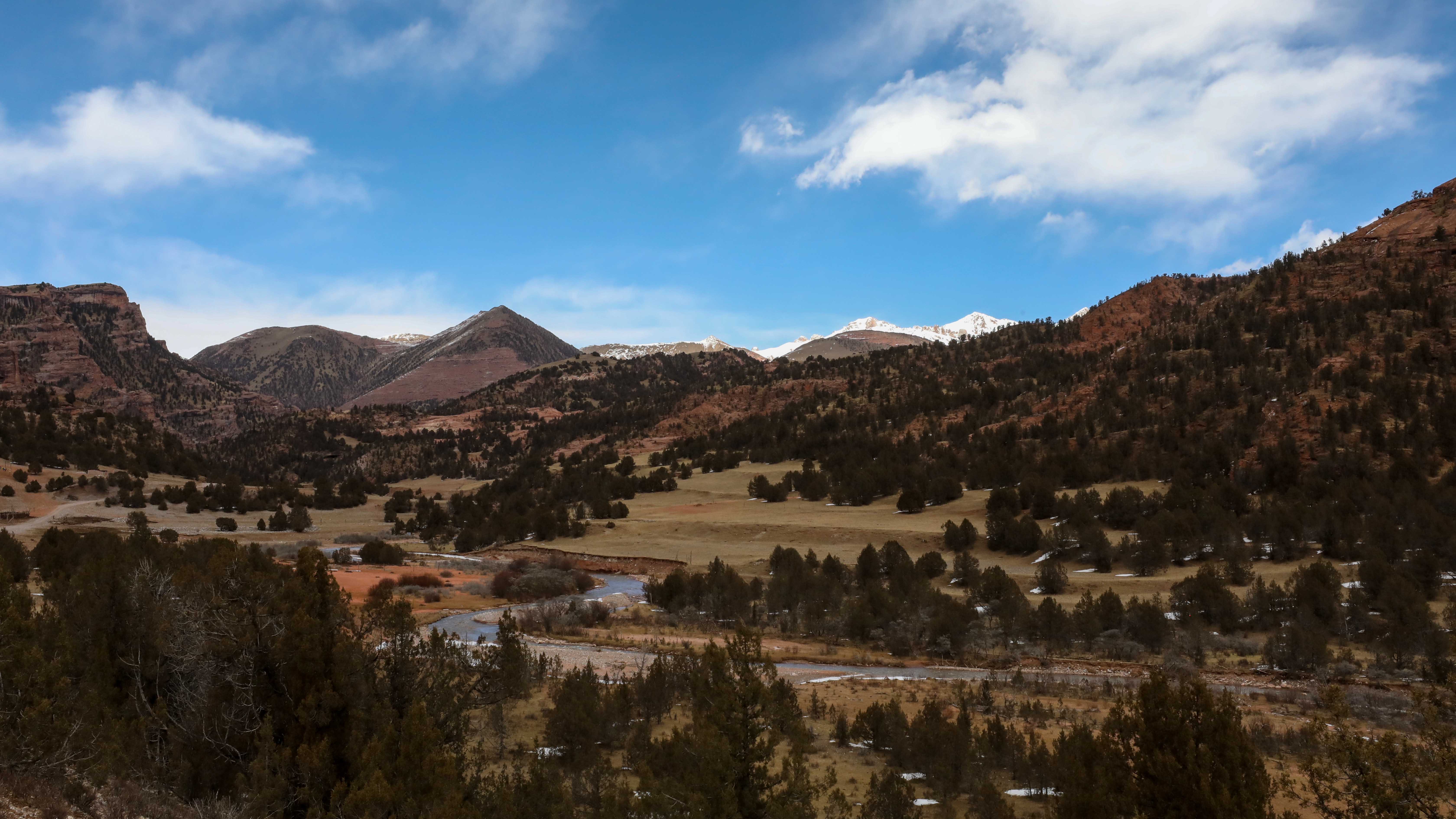
The valley of Angsai /CGTN Photo
But the biggest threats to the fragile landscapes and wildlife are humans. As plastic wastes have been found from the peak of Himalaya to the bottom of Mariana, if managed improperly, the snow leopards may lose their home one day.
To avoid the adverse effects from tourism, conservationist Justine Shanti Alexander and her team have spent two years in consultation with Snow Leopard Trust collaborators and key stakeholders and finally finished a 34-page document, stating four principles to minimize the impact of tourism.
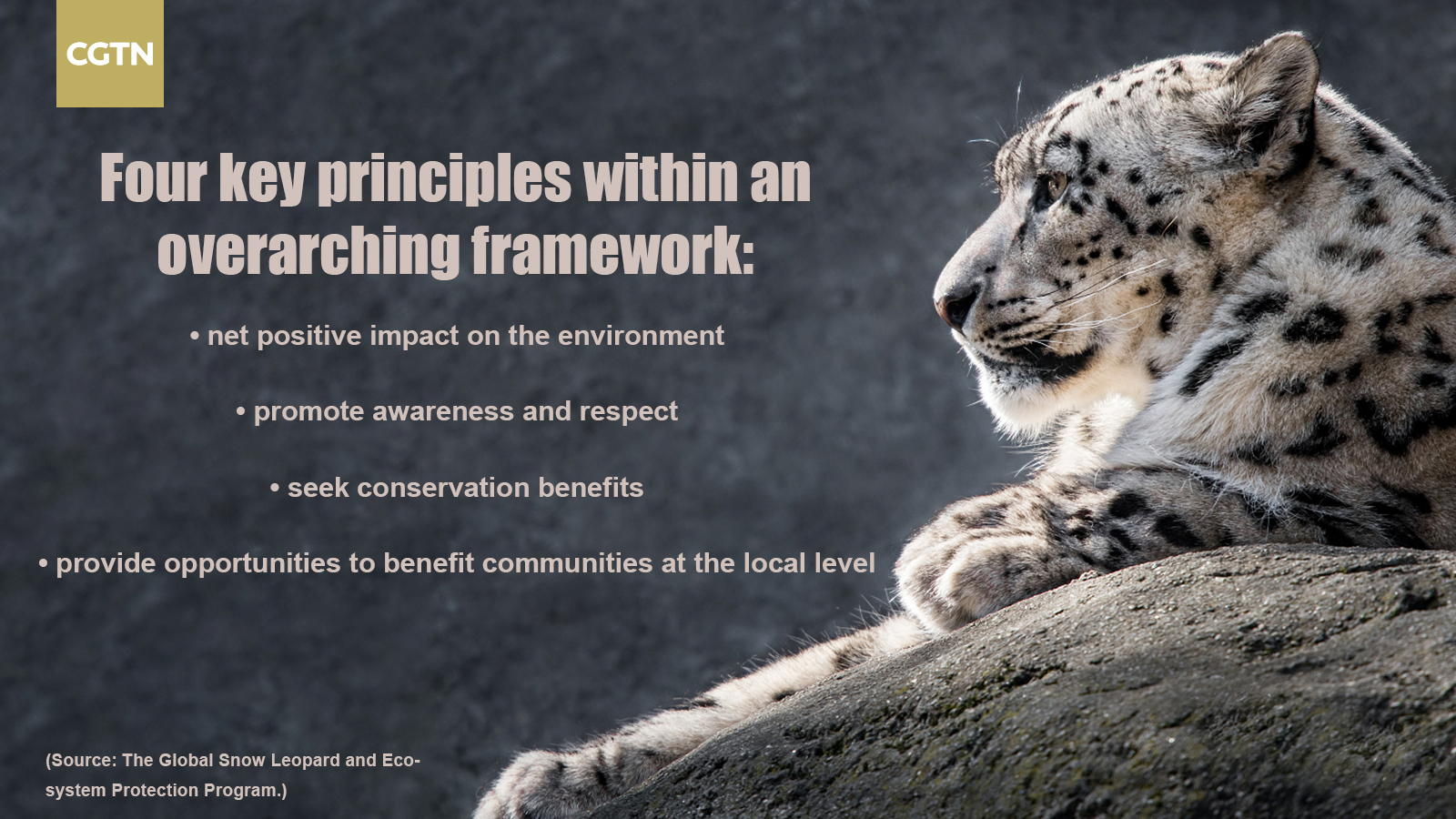
Four key principles within an overarching framework /CGTN's Qu Bo design
Justine thinks it's important to share and adopt the principles across the snow leopard range countries. "They should, however, be seen together as a 'living' document that is refined as further experience is gained, especially with tour operators and local communities themselves," said Justine.
The ecosystem on the snow leopard habitat is fragile, so why don't we close the tourism to protect it from human activities?
"Without human, they're just zoos and botanical gardens. It's hard to figure out a way of harmony between humankind and nature," said Luo Haiqing from Sanjiangyuan National Park where Angsai is part of its area.

Local community in Angsai County /CGTN Photo
For centuries, the local herdsmen have formed unique lifestyles to keep a balance of nature, but the outside cities' rapidly development has also triggered changes in the locals' traditional way of living. Consumer lifestyles cause overgrazing in pastures and push people to explore natural resources for more money; new products bring more plastic wastes on the plateau, which faces the absence of waste collection services.
Instead of hurting the environment, the locals need a new way out.
When Terry proposed the idea of "The Valley of the Cats" to the local government, he also provided a principle for tourism. "Recognizing that the biggest asset of this area is the wildlife, any tourism must be limited with a strict code of conduct for visitors," he said. And local guides are also encouraged to enforce the code of conduct.
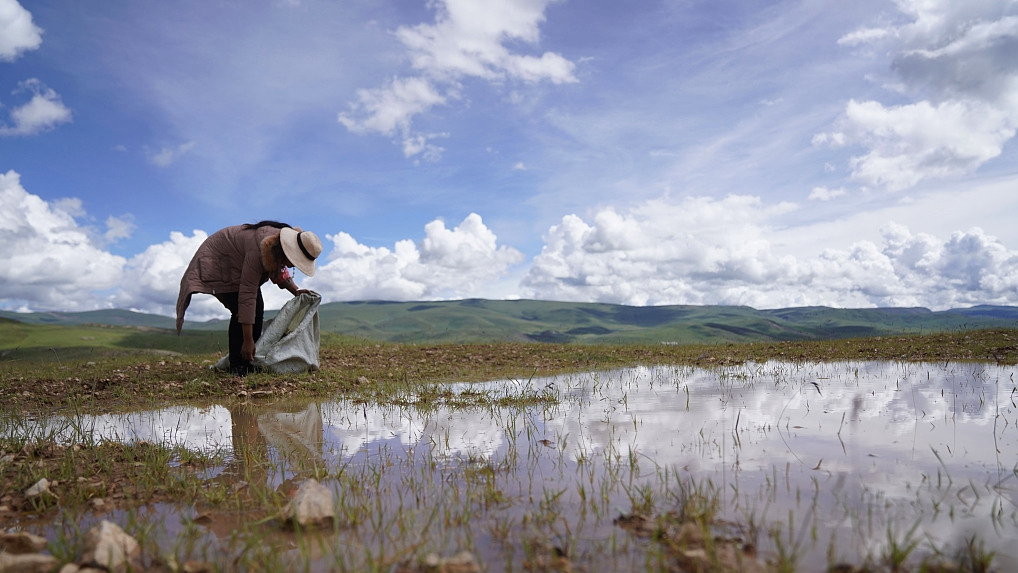
A local hersman is collecting plastic waste. /VCG Photo
Under appropriate management, locals can gain more incomes; meanwhile, raise the awareness of protecting their homeland. According to Luo Haiqing, wildlife is interfered or hurt due to tourism hasn't happened yet, "...and locals have accepted environmental protections as part of our life".
For Justine, ecotourism is not a new approach to protecting the environment. What's new is projects like "The Valley of the Cats" that focus on the snow leopard as a highly vulnerable species beginning to become a center of attention in tourism. She also urged urgent action to ensure that irreparable damage is done to snow leopard habitats.
(Top video is contributed by Terry Townshend. Cover image via VCG)
(If you want to contribute and have specific expertise, please contact us at nature@cgtn.com.)

Copyright © 2018 CGTN. Beijing ICP prepared NO.16065310-3
Copyright © 2018 CGTN. Beijing ICP prepared NO.16065310-3